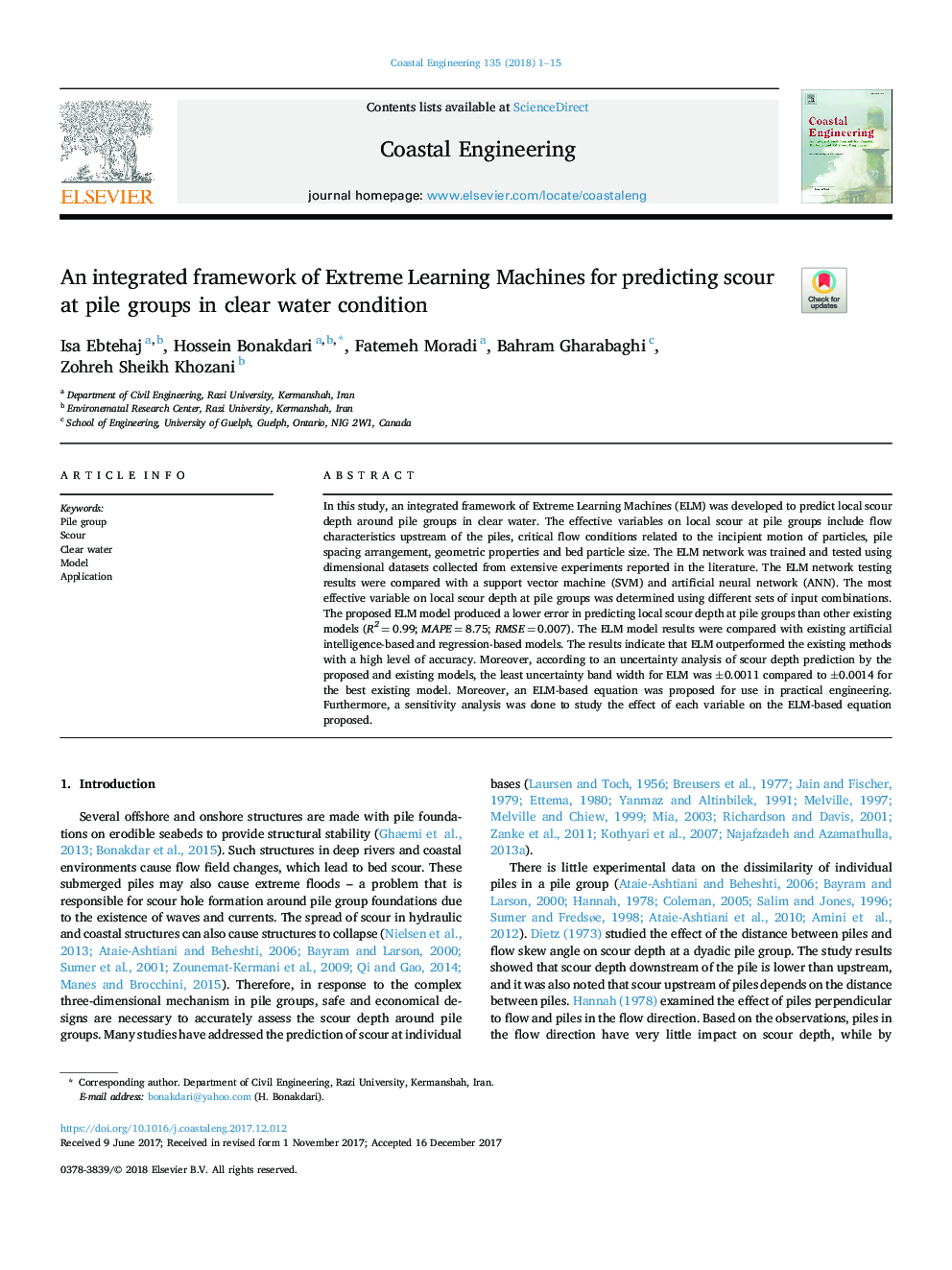| Article ID | Journal | Published Year | Pages | File Type |
|---|---|---|---|---|
| 8059532 | Coastal Engineering | 2018 | 15 Pages |
Abstract
In this study, an integrated framework of Extreme Learning Machines (ELM) was developed to predict local scour depth around pile groups in clear water. The effective variables on local scour at pile groups include flow characteristics upstream of the piles, critical flow conditions related to the incipient motion of particles, pile spacing arrangement, geometric properties and bed particle size. The ELM network was trained and tested using dimensional datasets collected from extensive experiments reported in the literature. The ELM network testing results were compared with a support vector machine (SVM) and artificial neural network (ANN). The most effective variable on local scour depth at pile groups was determined using different sets of input combinations. The proposed ELM model produced a lower error in predicting local scour depth at pile groups than other existing models (R2â¯=â¯0.99; MAPEâ¯=â¯8.75; RMSEâ¯=â¯0.007). The ELM model results were compared with existing artificial intelligence-based and regression-based models. The results indicate that ELM outperformed the existing methods with a high level of accuracy. Moreover, according to an uncertainty analysis of scour depth prediction by the proposed and existing models, the least uncertainty band width for ELM was ±0.0011 compared to ±0.0014 for the best existing model. Moreover, an ELM-based equation was proposed for use in practical engineering. Furthermore, a sensitivity analysis was done to study the effect of each variable on the ELM-based equation proposed.
Related Topics
Physical Sciences and Engineering
Engineering
Ocean Engineering
Authors
Isa Ebtehaj, Hossein Bonakdari, Fatemeh Moradi, Bahram Gharabaghi, Zohreh Sheikh Khozani,
